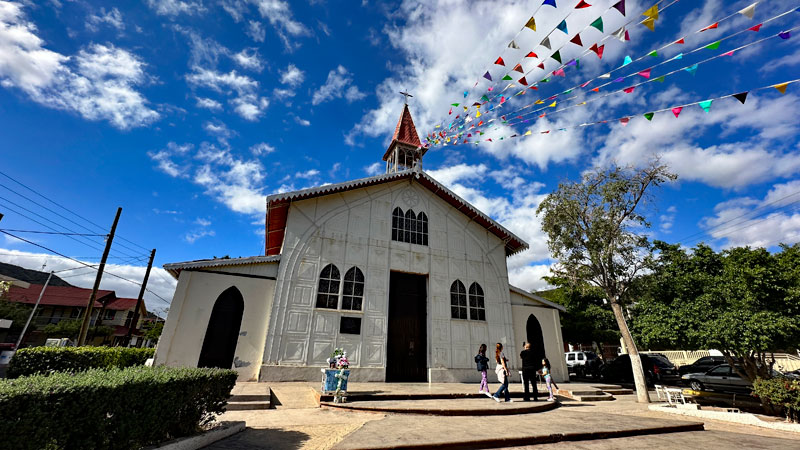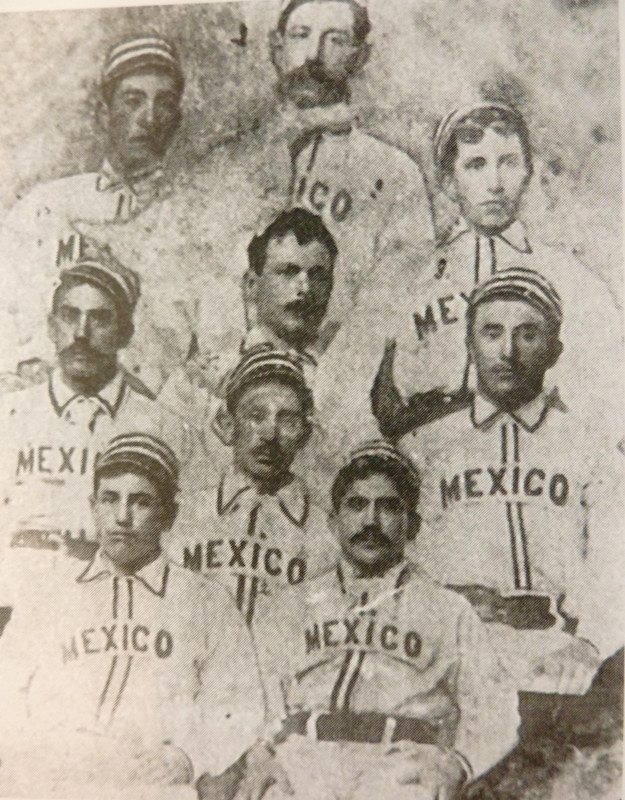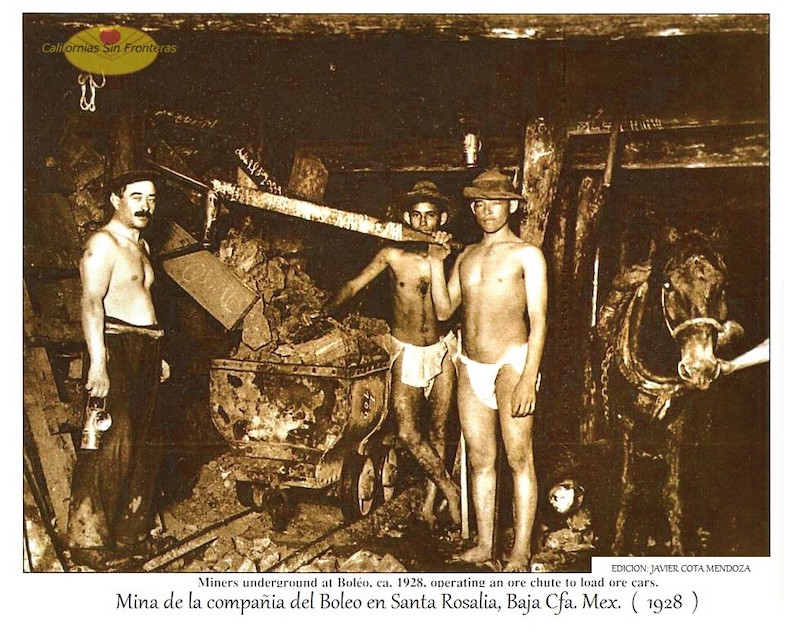David K
Honored Nomad
        
Posts: 65382
Registered: 8-30-2002
Location: San Diego County
Member Is Offline
Mood: Have Baja Fever
|
|
Santa Rosalia's Eiffel Church
A fairly nice new article with photos:
https://english.elpais.com/travel/2023-12-24/santa-rosalia-t...
Many years ago, I also wrote about the Eiffel church, with photos: https://www.bajabound.com/bajaadventures/bajatravel/eiffel_c...
Journal of San Diego History article from 1989: https://sandiegohistory.org/journal/1989/january/history/
Photos: https://sandiegohistory.org/journal/1989/january/historyimag...
In 1898:

|
|
|
StuckSucks
Super Nomad
   
Posts: 2369
Registered: 10-17-2013
Location: Pacific Plate
Member Is Offline
|
|
If you stop by to see the church on Mexican Revolution Day, it is closed (ask me how I know).

|
|
|
JZ
Select Nomad
      
Posts: 13531
Registered: 10-3-2003
Member Is Offline
|
|
Been there many times. It is beautiful. Early 00's we got stuck in the marina for 5 days waiting out a big blow. Spent lot of time walking all
over the town.
|
|
|
Maderita
Senior Nomad
  
Posts: 695
Registered: 12-14-2008
Location: San Diego
Member Is Offline
|
|
David, thanks for posting this.
One excerpt that caught my attention was this line, "...the news spread and soon attracted a group of miners of German origin who, with their thirst
for wealth, exhausted the surface layer of the deposit in just four years and left."
My great-great grandfather was a German geologist in Santa Rosalia in the 1880s. He became the postmaster in Santa Rosalia, and I've always wondered
why. The explanation may lie in the surface deposits of copper being mined out.
Subsequently, he went north to the newly discovered gold at El Álamo. east of Ensenada. That short-lived gold rush started in 1889. https://sandiegohistory.org/journal/1980/january/gold/
After the Gold Rush (best album by Neil Young, btw) he settled in Ensenada and opened a hotel. He started the first baseball team in Ensenada.
This photo, circa 1896, shows the tall German geologist in the back row.

|
|
|
John M
Super Nomad
   
Posts: 1924
Registered: 9-3-2003
Location: California High Desert
Member Is Offline
|
|
great story...
With a personal connection.
Wonderful photo of the baseball team as well.
John M
|
|
|
wilderone
Ultra Nomad
    
Posts: 3892
Registered: 2-9-2004
Member Is Offline
|
|
Regarding the initial discovery of copper - told a little differently than the article above:
"In 1868 José Rosa Villavicencio, a farmer in the Santa Agueda region, searching for a way across the mountains to the port of Santa Maria, noticed a
number of small irregular blue and green balls on the ground in and around the Santa Rosalía canyon. He showed these fragments to some people he knew
in Guaymas and they began to work the copper veins soon after. By 1873 there were thirty three mines registered in the area, most of them copper
mines.15 The mining was practiced in a haphazard way, by numerous small operations, the work done almost exclusively by Yaqui Indians brought over
from Sonora.16 The French engineers who reported a decade later on the conditions of the area and its future promise to the stock holders in Paris
estimated that between 40,000 and 60,000 tons of ore with a minimum fineness of 20 to 25 percent, had been shipped to Hamburg and London between 1872
and 1885.17 Only ore of such a high grade was worth shipping to the refineries in Europe. By 1885 there were also some twenty thousand tons of eight
percent ore piled in mounds near the beach, ore which the new company would include in its equations since it planned to build a smelting plant on
site which could work this ore and other lower grade ore and refine it to a purity that would make it cost efficient to ship it to Europe. With the
most rudimentary of technology the small concerns which had worked these holdings for over a decade before the arrival of the Paris company reported
profits of up to thirty five pesos per ton.
Mining in the Santa Agueda area was hard work and making a profit from it even more difficult. The outcroppings on the surface were soon exhausted and
it became more difficult and more expensive to gather sufficient amounts of high grade ore to make operations profitable. By the end of 1874 most of
the mines had been abandoned because of these facts.20 In 1885 there were two companies left.21 These companies had bought up their neighboring
smaller concerns and attempted to work the veins themselves. They soon realized that in order to do so profitably a large influx of capital was
necessary, one larger than they could put together themselves. But from where would this capital come?
Enter the French: capital looking for a place to go [the Rothchilds]."
https://ucworldhistory.ucr.edu/DavisAbstracts/kortheuerpaper...
|
|
|
David K
Honored Nomad
        
Posts: 65382
Registered: 8-30-2002
Location: San Diego County
Member Is Offline
Mood: Have Baja Fever
|
|
Thanks Cindi 
|
|
|
BajaBlanca
Select Nomad
      
Posts: 13241
Registered: 10-28-2008
Location: La Bocana, BCS
Member Is Offline
|
|
Amazing history and stories!
|
|
|
4x4abc
Ultra Nomad
    
Posts: 4446
Registered: 4-24-2009
Location: La Paz, BCS
Member Is Offline
Mood: happy - always
|
|
below the link to everything you always wanted to know about the Boleo Mine in Santa Rosalia (the cleaned up official version). Real life was that the
Yaki miners worked naked and without shoes underground. And who needs a helmet? That's why there are at least 10 cemeteries (I might find more) with
more than 15,000 graves in the hills behind town. With a workforce of around 3,000 that is a stunning number of graves
https://books.openedition.org/cemca/389?lang=es&fbclid=I...

[Edited on 3-6-2024 by 4x4abc]
Harald Pietschmann
|
|
|
wilderone
Ultra Nomad
    
Posts: 3892
Registered: 2-9-2004
Member Is Offline
|
|
Working in the mines may have been a better choice then than combat and slavery by your own government. Santa Rosalia overall grew to sustain many
professions: machine operators, oven repairers, maneuverers, welders, turners, blacksmiths, mechanics, electricians, accountants, sailors,
carpenters, workshop workers - their skill became famous; Maritime Customs, Port Captaincy, Peace Court, Royal Force, Schools, the Hospital.
Yaqui Uprising, 1896
In February 1896 an event known as the Yaqui Uprising began after the Mexican revolutionary Lauro Aguirre drafted a plan to overthrow the government
of Porfirio Díaz. Aguirre and his men were able to convince several Yaqui and Pima natives to join in the revolt so on August 12 a combined force of
no less than seventy men attacked the customs house at Nogales, Sonora. A battle then ensued which left at least three people dead and many more
wounded. During the fight a group of American militia formed in the adjoining town of Nogales, Arizona and they assisted the Mexican defenders in
repelling the rebels' attack. Ultimately the Yaquis and the others were obliged to withdraw from the area, ending the uprising and leading to a United
States Army operation to track the hostiles. Two companies of the 24th Infantry Regiment were assigned to hunt the rebels who were being pursued by
troops of the Mexican Army Colonel Emilio Kosterlitsky. However, the rebels got away, some escaped to Arizona. In 1897 a peace treaty was signed in
Ortiz between the Yaquis and the Mexican government but in 1899 another serious outbreak of hostilities began and it led to the bloody Mazocoba
Massacre of 1900, in which several hundred natives were killed. Manuel Balbás wrote in Recuerdos del Yaqui how some Yaqui's at Mazocoba survived
combat, but chose to take their own life, either with their own weapons, or by throwing themselves from the cliffs rather than surrender to the enemy.
... " It was at this point in time, in the late 1890s and early years of the 1900s, that a large number of Yaqui people began traveling north to
settle in the United States around Tucson and Phoenix, Arizona, and into parts of Texas, El Paso ....
Later developments:
Around this time Porfirio Díaz began advocating for a solution to the Yaqui wars. By 1903 the decision was made to deport both the peaceful and
rebellious Yaqui natives to the Yucatan and Oaxaca. Meanwhile, from 1904 to 1909, the Mexican governor of Sonora, Rafael Izábal, led "organized
manhunts" in which about 8,000 to 15,000 Yaquis were taken prisoner and "virtually enslaved".[citation needed]
|
|
|
David K
Honored Nomad
        
Posts: 65382
Registered: 8-30-2002
Location: San Diego County
Member Is Offline
Mood: Have Baja Fever
|
|
History... is not always pretty but for many it is very interesting and educational!
Thank you
|
|
|

